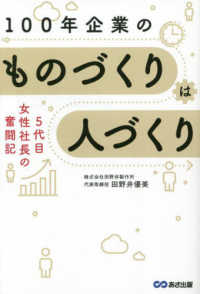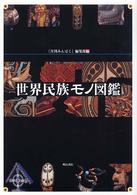- ホーム
- > 洋書
- > ドイツ書
- > Humanities, Arts & Music
- > Humanities
- > general surveys
基本説明
This book explores the hypothesis that the types of inscription or text used by a given community of practitioners are designed in the very same process as the one producing concepts and results.
Full Description
Among these, one can think of ways of naming, syntax of statements or grammatical analysis, literary techniques, modes of shaping texts or parts of text, genres of text and so on.Inthissense,thepractitionersdependon,anddrawon,the"textualcultures"available to the social and professional groups to which they belong.







